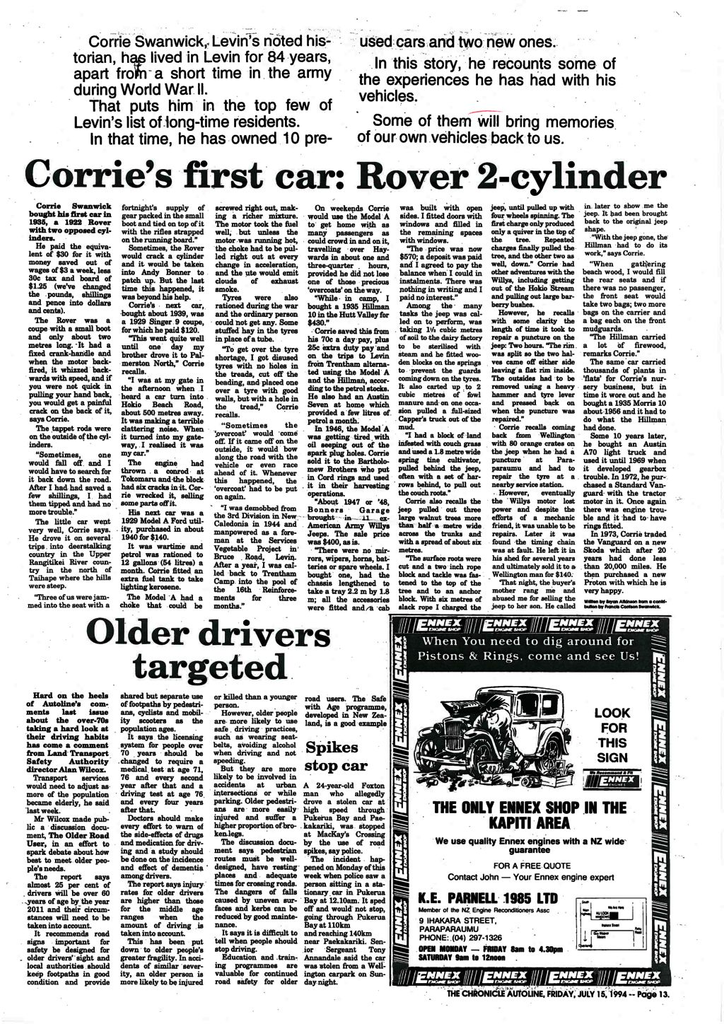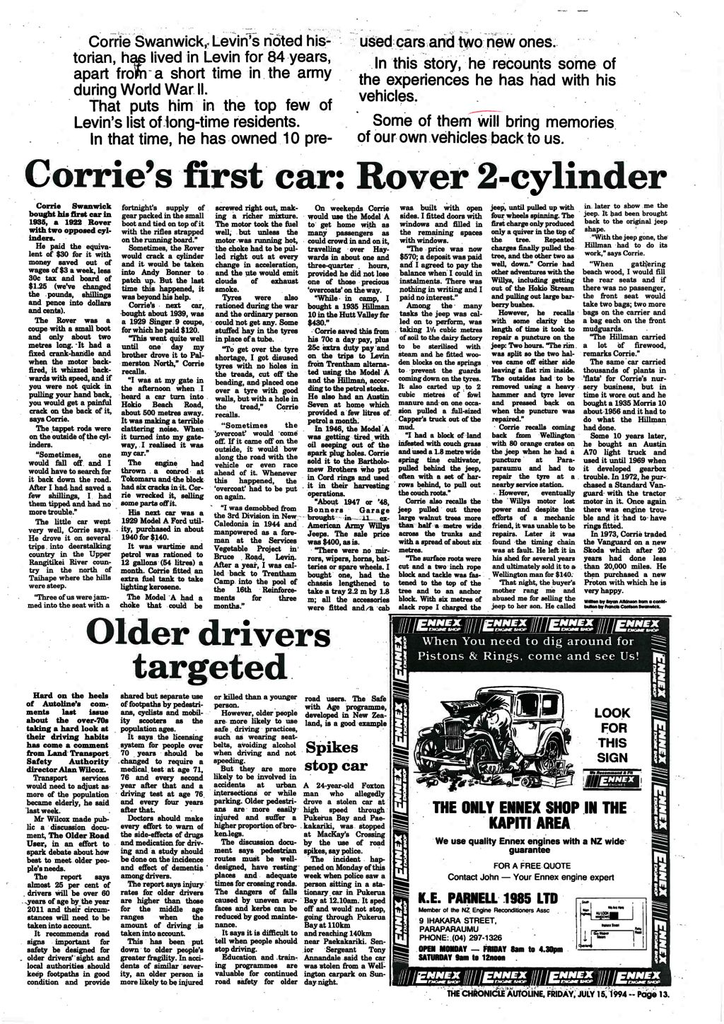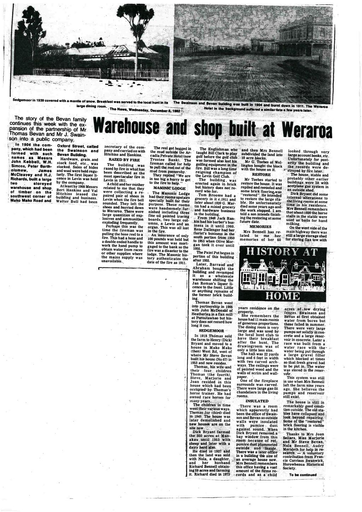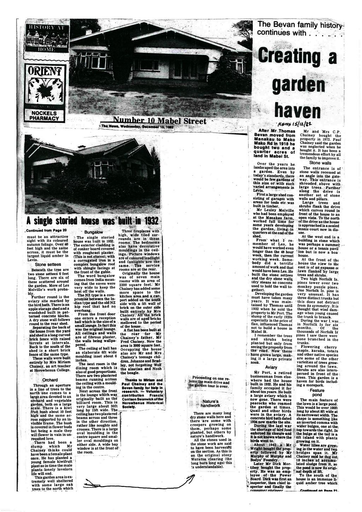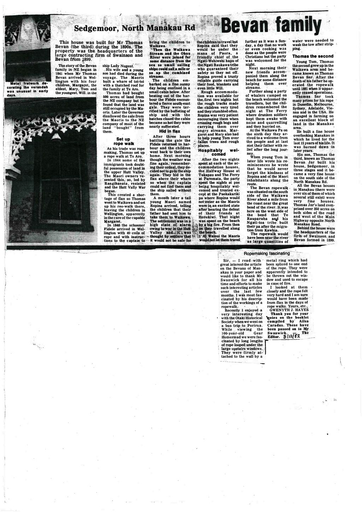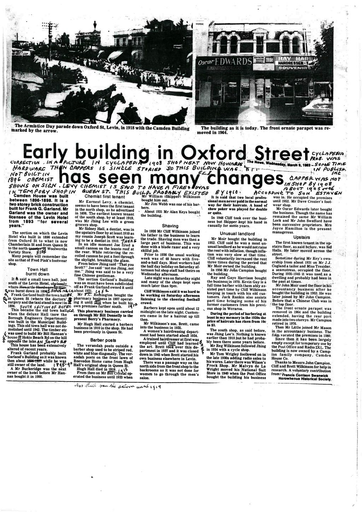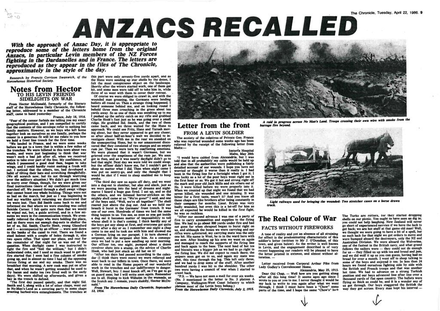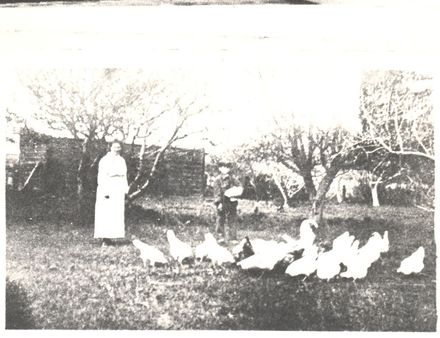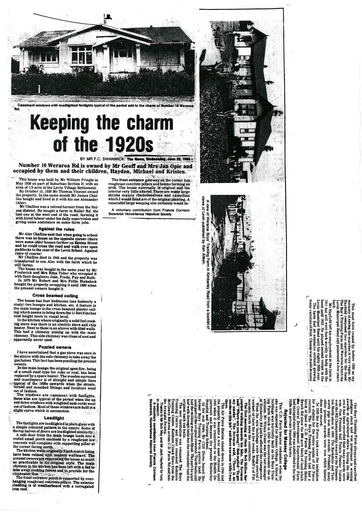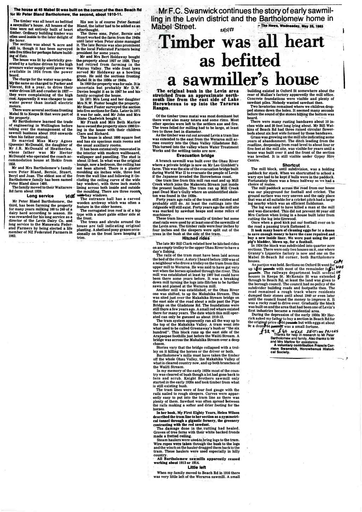Corrie's first car: Rover 2-cylinder
- Description
He paid the equivalent of £30 for it with money saved out of wages of £3 a week, less 30c tax and board of $1.25 (we’ve changed the pounds, shillings and pence into dollars and cents).
 The Rover was a coupe with a small boot and only about two metres long. It had a fixed crank-handle and when the motor back-fired, it whizzed backwards with speed, and if you were not quick in pulling your hand back, you would get a painful crack on the back of it, says Corrie.
The Rover was a coupe with a small boot and only about two metres long. It had a fixed crank-handle and when the motor back-fired, it whizzed backwards with speed, and if you were not quick in pulling your hand back, you would get a painful crack on the back of it, says Corrie.The tappet rods were on the outside of the cylinders.
“Sometimes one would fall off and I would have to search for it back down the road. After I had saved a few shillings, I had them tipped and had no more trouble.”
The little car went very well, Corrie says. He drove it on several trips into deerstalking country in the Upper Rangitikei River country in the north of Taihape where the hills were steep.
“Three of us were jammed into the seat with a fortnight’s supply of gear packed in the small boot and tied on top of it with the rifles strapped on the running board.”
Sometimes, the Rover would crack a cylinder and it would be taken into Andy Bonner to patch up. But the last time this happened, it was beyond his help.
Corrie’s next car, bought about 1939, was a 1929 Singer 9 coupe, for which he paid $120.
“This went quite well until one day my brother drove it to Palmerston North,” Corrie recalls.
“I was at my gate in the afternoon when I heard a car turn into Hokio Beach Road, about 500 metres away. It was making a terrible clattering noise. When it turned into my gateway, I realised it was my car.”
The engine had thrown a conrod at Tokomaru and the block had six cracks in it. Corrie wrecked it, selling some parts off it.
His next car was a 1929 Model A Ford utility, purchased in about 1940 for $140.
It was wartime and petrol was rationed to 12 gallons (54 litres) a month. Corrie fitted an extra fuel tank to take lighting kerosene.
The Model A had a choke that could be screwed right out, making a richer mixture. The motor took the fuel well, but unless the motor was running hot, the choke had to be pulled right out at every change in acceleration, and the ute would emit clouds of exhaust smoke.
Tyres were also rationed during the war and the ordinary person could not get any. Some stuffed hay in the tyres in place of a tube.
“To get over the tyre shortage, I got disused tyres with no holes in the treads, cut off the beading, and placed one over a tyre with good walls, but with a hole in the tread.” Corrie recalls.
“Sometimes the ‘overcoat’ would come off. If it came off on the outside, it would bowl along the road with the vehicle or even race ahead of it. Whenever this happened, the ‘overcoat’ had to be put on again.
“I was demobbed from the 3rd Division in New Caledonia in 1944 and manpowered as a foreman at the Services Vegetable Project in Bruce Road, Levin. After a year, I was called back to Trentham Camp into the pool of the 16th Reinforcements for three months.”
On weekends Corrie would use the Model A to get home with as many passengers as could crowd in and on it, travelling over Haywards in about one and three quarter hours, provided he did not lose one of those previous ‘overcoats’ on the way.
“While in camp, I bought a 1935 Hillman 10 in the Hutt Valley for $430.”
Corrie saved this from his 70c a day pay, plus 25c extra duty pay and on the trips to Levin from Trentham alternated using the Model A and the Hillman, according to the petrol stocks. He also had an Austin Seven at home which provided a few litres of petrol a month.
In 1946, the Model A was getting tired with oil seeping out of the spark plug holes. Corrie sold it to the Bartholomew Brothers who put in Cord rings and used it in their harvesting operations.
“About 1947 or ’48, Bonners Garage brought in 11 ex American Army Willys Jeeps. The sale price was $400 as is.”
“There were no mirrors, wipers, horns, batteries or spare wheels. I bought one, had the chassis lengthened to take a tray 2.2m by 1.8m; all the accessories were fitted and a cab was built with open sides. I fitted doors with windows and filled in the remaining spaces with windows.”
“The price was now $570; a deposit was paid and I agreed to pay the balance when I could, in instalments. There was nothing in writing and I paid no interest.”
Among the many tasks the jeep was called on to perform, was taking 1½ cubic metres of soil to the dairy factory to be sterilised with steam and he fitted wooden blocks on the springs to prevent the guards coming down on the tyres. It also carted up to 2 cubic metres of fowl manure and on one occasion pulled a full-sized Capper’s truck out of the mud.
“I had a block of land infested with couch grass and used a 1.8 metre wide spring tine cultivator, pulled behind the jeep, often with a set of harrows behind, to pull out the couch roots.”
Corrie also recalls the jeep pulled out three large walnut trees more than half a metre wide across the trunks, and with a spread of about six metres.
“The surface roots were cut and a two inch rope block and tackle was fastened to the top of the tree and to an anchor block. With six metres of slack rope I charged the jeep, until pulled up with four wheels spinning. The first charge only produced a quiver in the top of the tree. Repeated charges finally pulled the tree, and the other two as well, down.” Corrie had other adventures with the Willys, including getting out of the Hokio Stream and pulling out large barberry bushes.
However, he recalls with some clarity the length of time it took to repair a puncture on the jeep: two hours. “The rim was split so the two halves came off either side leaving a flat rim inside. The outsides had to be removed using a heavy hammer and tyre lever and pressed back on when the puncture was repaired.”
Corrie recalls coming back from Wellington with 80 orange crates on the jeep when he had a puncture at Paraparaumu and had to repair the tyre at the nearby service station.
However, eventually the Willys motor lost power and despite the efforts of a mechanic friend, it was unable to be repaired. Later it was found the timing chain was at fault. He left it in his shed for several years and ultimately sold it to a Wellington man for $140.
“That night, the buyer’s mother rang me and abused me for selling the jeep to her son. He called in later to show me the jeep. It had been brought back to the original jeep shape. With the jeep gone, the Hillman had to do its work,” says Corrie.
“When gathering beach wood, I would fill the rear seats and if there was no passenger, the front seat would take two bags; two more bags on the carrier and a bag each on the front mudguards. The Hillman carried a lot of firewood,” remarks Corrie.
The same car carried thousands of plants in ‘flats’ for Corrie’s nursery business, but in time it wore out and he bought a 1935 Morris 10 about 1956 and it had to do what the Hillman had done.
Some 10 years later, he bought an Austin A70 light truck and used it until 1969 when it developed gearbox trouble. In 1972, he purchased a Standard Vanguard with the tractor motor in it. Once again there was engine trouble and it had to have rings fitted.
In 1973, Corrie traded the Vanguard on a new Skoda which after 20 years had done less than 20,000 miles. He then purchased a new Proton with which he is very happy.
Identification
- Date
- July 15, 1994
Taxonomy
- Community Tags

